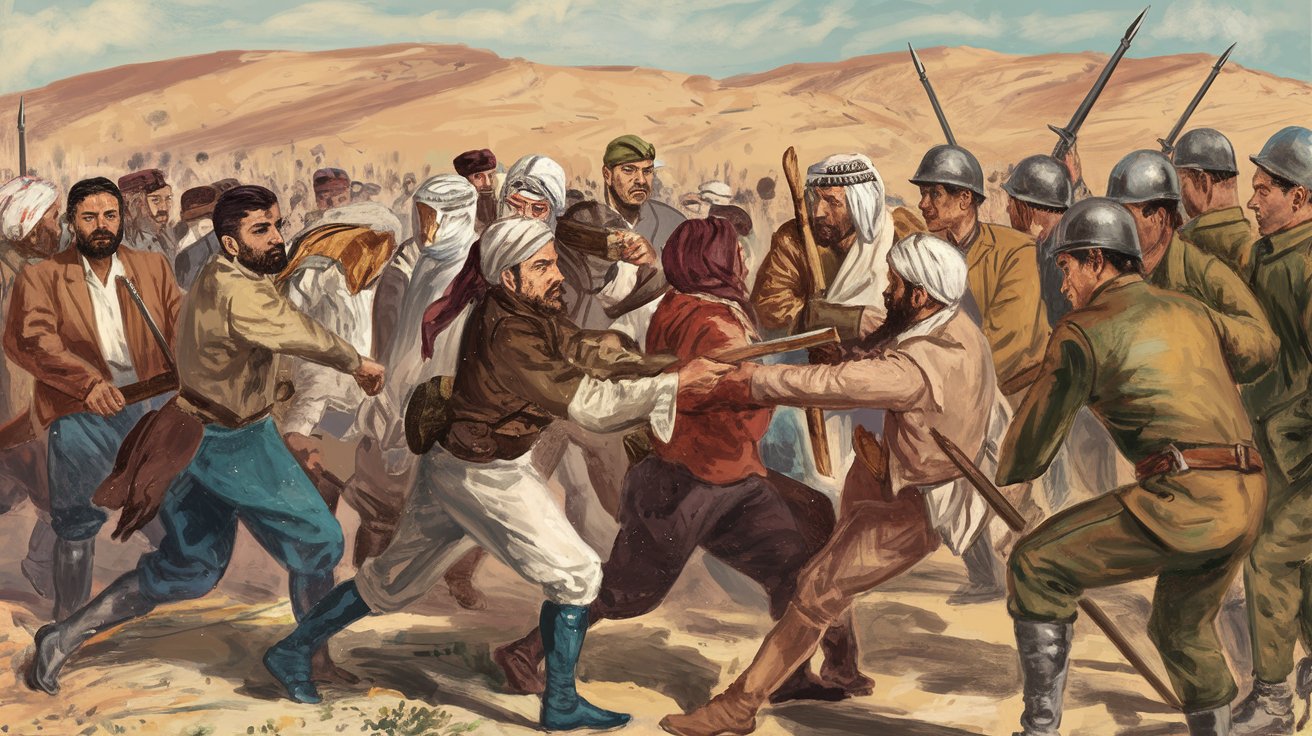
Gugsa Wale's Rebellion was a pivotal event in Ethiopian history, marking a significant challenge to Emperor Haile Selassie's rule. But what exactly sparked this rebellion? In 1930, Ras Gugsa Wale, a powerful nobleman, opposed Haile Selassie's centralizing policies and sought to restore regional autonomy. This conflict wasn't just a power struggle; it was a clash of ideologies and visions for Ethiopia's future. The rebellion culminated in the Battle of Anchem, where Haile Selassie's forces decisively defeated Gugsa Wale. Why does this matter today? Understanding this rebellion sheds light on Ethiopia's complex history of regional and central power dynamics, influencing its modern political landscape. Dive into these 25 facts to grasp the full scope of Gugsa Wale's Rebellion and its lasting impact.
Key Takeaways:
- Gugsa Wale's Rebellion was a power struggle in Ethiopia in 1930, with regional rivalries and dissatisfaction with central authority fueling the conflict. It ended with Gugsa Wale's defeat and the strengthening of Haile Selassie's rule.
- The rebellion highlighted tensions between modernity and tradition in Ethiopian society, leading to further centralization of power and the end of significant regional rebellions against the central government for a time.
The Background of Gugsa Wale's Rebellion
Gugsa Wale's Rebellion, a significant event in Ethiopian history, took place in the early 20th century. This conflict was a power struggle that had lasting impacts on the country's political landscape.
- Gugsa Wale was a prominent Ethiopian nobleman and military leader.
- The rebellion occurred in 1930.
- It was primarily a power struggle against Emperor Haile Selassie I.
- Gugsa Wale was the governor of Begemder, a northern province in Ethiopia.
- The rebellion was partly fueled by regional rivalries and dissatisfaction with central authority.
Key Figures in the Rebellion
Understanding the main players in Gugsa Wale's Rebellion helps to grasp the complexities of this historical event.
- Emperor Haile Selassie I was the reigning monarch during the rebellion.
- Ras Gugsa Wale led the rebellion against the emperor.
- Empress Zewditu, Haile Selassie's predecessor, had a close relationship with Gugsa Wale.
- Ras Kassa Haile Darge was a loyal supporter of Haile Selassie and played a crucial role in quelling the rebellion.
- Fitawrari Habte Giyorgis was another key military leader on the emperor's side.
Causes of the Rebellion
Several factors contributed to the outbreak of Gugsa Wale's Rebellion, ranging from political to personal motivations.
- Centralization efforts by Haile Selassie threatened regional autonomy.
- Gugsa Wale opposed the modernization policies of the emperor.
- There were personal grievances between Gugsa Wale and Haile Selassie.
- The rebellion was partly a reaction to the decline of traditional nobility.
- Economic factors also played a role, as some regions felt neglected by the central government.
Major Battles and Events
The rebellion saw several key battles and events that shaped its outcome.
- The Battle of Anchem was the decisive conflict of the rebellion.
- Gugsa Wale's forces were defeated by the imperial army.
- The rebellion ended with the death of Gugsa Wale in battle.
- Modern weaponry and tactics used by the imperial forces played a significant role in their victory.
- The rebellion lasted for a short period, from February to March 1930.
Aftermath and Impact
The consequences of Gugsa Wale's Rebellion had long-lasting effects on Ethiopia's political and social landscape.
- The rebellion's defeat strengthened Haile Selassie's rule.
- It led to further centralization of power in Ethiopia.
- The rebellion highlighted the tensions between modernity and tradition in Ethiopian society.
- It marked the end of significant regional rebellions against the central government for a time.
- The rebellion's failure demonstrated the importance of military loyalty to the emperor.
The Final Stand
Gugsa Wale's Rebellion was a pivotal moment in Ethiopian history. It showcased the tension between tradition and modernization. The rebellion, led by Gugsa Wale, aimed to challenge the central authority of Emperor Haile Selassie. Despite initial successes, the rebellion was ultimately crushed, reaffirming Haile Selassie's power. This event highlighted the complexities of Ethiopian politics and the struggle for power among regional leaders.
Understanding this rebellion offers insight into Ethiopia's journey towards centralization and modernization. It also underscores the resilience of Haile Selassie's regime. Gugsa Wale's Rebellion remains a significant chapter in Ethiopia's rich history, reflecting the nation's dynamic political landscape.
By examining these facts, we gain a deeper appreciation for the historical forces that shaped Ethiopia. Gugsa Wale's Rebellion is more than just a historical event; it's a testament to the enduring spirit of the Ethiopian people.
Frequently Asked Questions
Was this page helpful?
Our commitment to delivering trustworthy and engaging content is at the heart of what we do. Each fact on our site is contributed by real users like you, bringing a wealth of diverse insights and information. To ensure the highest standards of accuracy and reliability, our dedicated editors meticulously review each submission. This process guarantees that the facts we share are not only fascinating but also credible. Trust in our commitment to quality and authenticity as you explore and learn with us.
